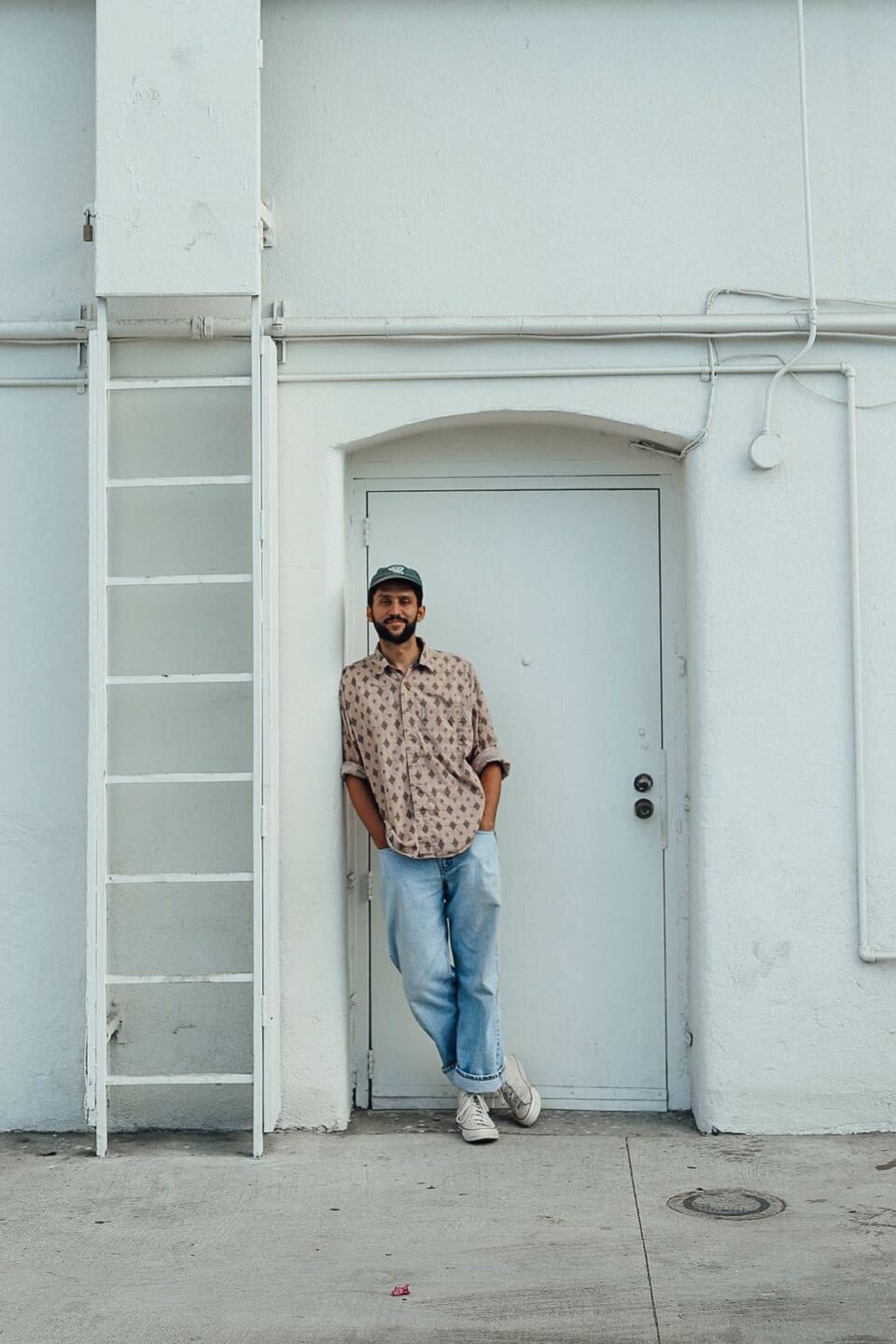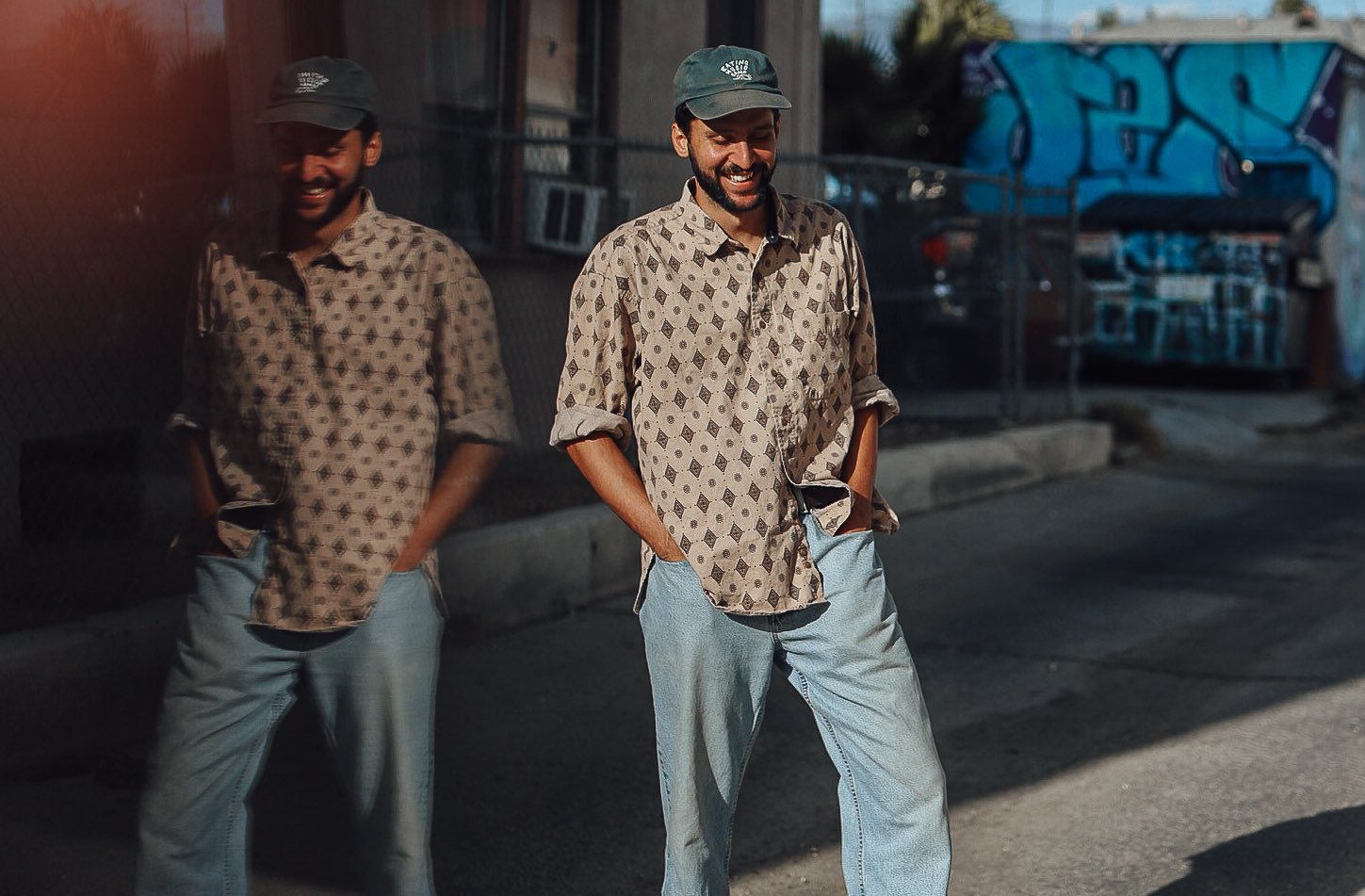This article appears in FLOOD 12: The Los Angeles Issue. You can purchase this special 232-page print edition celebrating the people, places, music and art of LA here.
BACKSTORY: A late-twenties pianist/beatmaker whose jazz education at UCLA intersected with his immersion in Los Angeles' vibrant beat scene, rendering him one of the city’s most compellingly mercurial young musicians
FROM: San Diego, California
YOU MIGHT KNOW HIM FROM: His Donuts-esque beat collage debut record from 2017, Kickinit Alone, which he dropped before signing with Stones Throw Records and releasing the resonantly melancholic album Happysad (2018) and the similarly moving Between Days (2019)
NOW: Fresh off the release of his latest record, When There's Love Around, his first with a live band and one that’s both wistful and euphoric, honoring those who've passed while imbuing the fraught present moment with precious unity
As the Los Angeles sun floods his vinyl-walled apartment, Kiefer smiles. About to tour the country behind his radiant record, When There’s Love Around, the Highland Park–based artist emanates a joy that’s all too precious amidst the often strenuous music industry and which serves as a salve for fiery times like these.
Born Kiefer Shackelford in San Diego in 1992, the musician started playing the piano as a toddler and, some years later, began driving around town with his jazz-loving father who would blast such legends of the genre as John Coltrane from the speakers. Kiefer was hooked—so tightly that he decided he wanted to study jazz intensely. “Someone had a transcription written down, and I was like, ‘What? You can do that?’” he tells me. “And then my dad was like, ‘Oh, I never told you that? Yeah, you can just transcribe, train your ear, see what people play, and develop your own style.’”
“I think my job is to find beauty and reflect it. I hear things, and when I think they’re really beautiful I try to reinterpret them in the way that only I can, and I think that’s what I’m supposed to do.”
Proceeding to enroll in UCLA’s Jazz Studies program—which master guitarist Kenny Burrell oversees, and where saxophone king Kamasi Washington trained—Kiefer dove headlong into jazz, scouring all of its nuances. It was also around this time that he discovered Low End Theory, the much-missed Wednesday night beats show at The Airliner in Los Angeles’s Lincoln Heights neighborhood. Mesmerized by the technical wizardry of such artists as now-labelmate Mndsgn, Kiefer saw that he didn’t need to be a traditional jazz musician—he could meld the form with the alternative hip-hop sounds that boomed from the stage.
Not long after graduating from college, the musician released Kickinit Alone through Leaving Records, which properly spun heads. Opening with the simultaneously sputtering and sparkling “Tubesocks” and continuing with “Butterfly Inside My House,” a handclap-backed track that flutters like the titular insect, the debut album announced an artist who was both heady and accessible, a musician who could convey emotions, whether it be jubilee or heartbreak, with just one beat.

While Kiefer is surely influenced by the late J Dilla and the contemporary beat master Flying Lotus, he’s become a renowned beatmaker himself over the past several years. As proven by Happysad, the wistful follow-up to his debut, Kiefer flourishes at not only crafting individually compelling sounds but unearthing music’s cathartic power, his beats washing away hard days while evoking breezy afternoons. He has consequently emerged as no less than a new, deeply emotive sonic visionary.
Speaking about his approach to beatmaking, Kiefer says, “There are a lot of ways that I like to do it. At the time of Kickinit Alone, which I think is my favorite of the beat albums, the process was me doing about three to five minutes of improvising on the piano, and then whatever I would find really captivating would be the thing.” Like one of his piano heroes, Bill Evans, Kiefer is something of a diarist behind the piano, almost literally pouring his heart onto the keys. The fact that he melds the rich balladry of jazz with the swaggering bounce of hip-hop, while always pointing toward the future of this union, only adds to his endurance.
“While it’s not as vital as oxygen, shelter, food, or water, for me [music is] almost that next step on the hierarchy of needs: meaning.”
More importantly, Kiefer is a deeply authentic musician and is in the business for the right reasons, specifically uplifting people. “I think my job is to find beauty and reflect it,” he says. “I hear things, and when I think they’re really beautiful I try to reinterpret them in the way that only I can, and I think that’s what I’m supposed to do.” Ever pushing himself, he digs deeper and says, “How important is music actually? Could I survive without it? I could, but I don’t want to, and I don’t think most people want to. While it’s not as vital as oxygen, shelter, food, or water, for me it’s almost that next step on the hierarchy of needs: meaning.”
Kiefer’s latest record, When There’s Love Around—which takes its name from a song off The Crusaders’ 1974 album Southern Comfort, and which was partly recorded at DJ Jazzy Jeff’s studio just before the coronavirus pandemic struck the world—brims with sheer happiness and a spirit of togetherness. His first album made with a live band (one that includes such jazz luminaries as Will Logan and DJ Harrison), When There’s Love Around is a spectral work that ponders the magical power of connection.
With the drum-sizzled, head-nod-triggering “i remember this picture” opening the record before the keys-sprinkled “curly” segues into the album’s cascading latter half, the work becomes a song cycle about memories of ancestors, unity amongst friends, and everyday acts of affection. In its search for life’s vast possibilities, the album marks Kiefer as a musician who, like the purest ones, believes in music’s transcendence and seeks to share its magic with others.
His California afternoon ending and a national tour starting, Kiefer beams his signature smile and waves goodbye. It’s time to launch. FL










